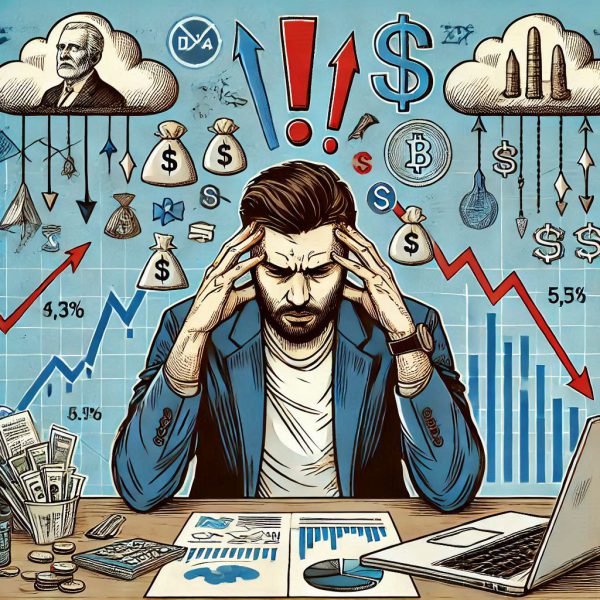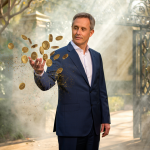
Biggest Trading Mistakes: Don’t Be Stupid, Learn!
Jan 24, 2025
Introduction
Why do even experienced traders sometimes make shocking errors that derail their plans and drain their profits? Imagine a friend boasting about a “can’t-miss” stock at a neighbourly barbecue, fuelled by recent market highs. Everyone else seems to be jumping on board, so the friend does, too, convinced that the upward streak will never end. Such moments illustrate how easily group excitement can overshadow careful judgment, setting the stage for monumental trading mistakes. Financial history provides countless lessons on how human emotions can hijack reason, from the tech frenzy of the late 1990s to the ballooning property market ahead of 2008. When hope reaches extreme levels, all it takes is uncertainty to make everything tumble.
In the sections that follow, we will examine the biggest trading blunders that trap unaware investors. Central to this conversation is the interplay of mass psychology, behavioural finance, and technical analysis. Each has a role in driving markets, and each can safeguard us from missteps or push us toward ruin. Fear and euphoria thrive in trading arenas. Fear provokes panicked selling that locks in painful losses, whereas euphoria entices us to hold on for “just a bit more,” often at the worst possible time. Contrarian thinking, guided by an understanding of these emotional undercurrents, frequently paves the way for those who ultimately fare better than the crowd.
The Lure of the Crowd and the Perils of Herd Behaviour
Why is it so tempting to follow others in the market? One reason is social proof: we feel safer when everyone else does something similar. More than once, this has led entire groups into overhyped assets with little basis in reality. The dot-com craze is a prime example: at its peak, anything with an “.com” attached to its name soared to dizzying heights, fuelled by a widespread conviction that digital supremacy was guaranteed. Even people who spotted warning signs found themselves second-guessing their doubts because the crowd was so firmly convinced. When the collapse finally arrived, it was swift and brutal, punishing those who had ignored rational caution in pursuit of easy wins.
Herd behaviour becomes particularly dangerous when markets surge far above any logical measure, often accompanied by headlines proclaiming a “new era” of investment brilliance. This mood fosters a false sense of security, encouraging participants to dismiss risk entirely. At such moments, profitable trades become less about fundamentals and more about riding the wave of enthusiasm. The trouble comes when momentum stalls. Suddenly, everyone scrambles for the exit, triggering sharp price drops and leaving those slow to react, holding plummeting assets.
Experts in behavioural finance explain that herd behaviour is not simply a matter of naivety. Instead, it is entwined with deep-seated instincts, where people prefer to avoid the feeling of isolation by going along with the majority. This sense of unity can be comforting in good times but devastating when sentiment turns. In 2008, for instance, many banks, homebuyers, and investors believed that property prices would never slump as badly as they did. Even though some contrarians warned about toxic mortgages and overheated valuations, an air of disbelief met their objections. Once the correction began, the catastrophic fall in property values and the broader financial market proved just how risky it is to rely on group thinking.
Timing Errors: Buying Too Late and Selling Too Soon
Despite the old adage “Buy low and sell high,” countless traders do the opposite. While buying an asset only after it has soared may seem logical if the trend is strong, it works against those who constantly chase momentum at its peak. Equally, selling too early can be a mistake if triggered by jitters rather than a methodical plan. Yet many find themselves exiting positions prematurely, fearing calamity after a minor dip.
The most profound errors occur when traders struggle to differentiate normal market fluctuations from true warning signals. For example, a stock might dip 5%, prompting a startled trader to exit, only for the price to rebound the following week. A healthy approach involves setting well-defined risk thresholds, guided by data, and resisting the urge to sell at every twitch. Conversely, failing to have any plan often leads to holding onto positions long after prudent risk management recommends partial or complete liquidation.
Market crashes serve as pivotal proving grounds for trading discipline. When fear spikes, everything feels precarious, but that same panic can deliver huge opportunities. The 2008 crash battered well-known banks and industrial giants, dragging their share prices to levels that appeared unthinkable just months before. Investors who bought into stable companies at these bargain rates reaped handsome returns once confidence returned. Of course, distinguishing a panic-fuelled fall from a deeper problem is no easy feat. However, well-studied participants combine technical chart signals and fundamental checks to spot undervalued situations. They acknowledge that while no method is foolproof, ignoring these potential bargains can lock you out of the eventual upswing.
Emotional Hazards: Fear, Greed, and Overconfidence
Fear and greed rank among the most potent forces shaping market moves. Greed propels traders to chase trends beyond reason, expecting prices to keep climbing indefinitely, while fear sparks liquidations at rock-bottom prices once panic sets in. A classic scenario unfolds when an investor, after spotting an apparently unstoppable rally, places an aggressively large position. Initially, the euphoria of quick gains produces a surge of adrenaline. But when the rally falters, panic kicks in, prompting a reckless exit that locks in steep losses.
Overconfidence is another culprit behind many disastrous trades. It leads traders to presume they have superior knowledge or skill, leading them to ignore sound risk parameters. Familiar stories recount individuals who successfully doubled their money on a speculative bet, only to be ruined later by a series of poor trades. Overconfidence often masks the reality that markets can turn on a dime, influenced by variables as wide-ranging as central bank policies, geopolitical tensions, or sudden shifts in economic data.
Experts advise focusing on disciplined strategies that account for the possibility of being wrong. This means setting stop-loss levels to limit damage, diversifying positions to prevent one trade from sinking the entire portfolio, and maintaining a balanced watch on current events. While it is impossible to eradicate human emotions, successful traders train themselves to keep these impulses in check. They might apply rudimentary measures like cooling-off periods after significant gains or losses, delaying fresh entries until they have mentally reset.
The famous investor Benjamin Graham once suggested that the market is often driven by mood rather than clear judgment. According to that view, the biggest blunders come from forgetting that mania and despair each play major roles at unexpected times. A skilful trader blends emotional awareness with strong risk regulation, ensuring that fear and overconfidence do not dictate outcomes.
Misuse of Technical Signals and Blind Spots in Analysis
Technical analysis offers valuable clues about momentum, support levels, and shifts in sentiment. Nevertheless, many traders misuse these tools by reading too much into every minor fluctuation. Overtrading is a prime example of this pitfall. A trader might jump in and out of positions based on short-term signals without confirming structural trends or volumes. Repeated small losses can slowly drain a portfolio, even in an upward-trending market.
Another misstep is ignoring major divergences. For instance, if stock prices continue rising while an oscillator like the MACD slows downward, it might signal weakening momentum. When such divergences appear at the top of a vigorous rally, cautious traders start protecting gains. Those disregarding these signals risk absorbing drastic losses when a steep drop occurs. After all, the biggest collapses often happen when high-flying assets suddenly encounter a surge in selling pressure.
A balanced attitude is vital. Checking charts or scanning popular indicators can be a good start, but confirming the validity of signals with more than one measure is wise. For example, the Relative Strength Index might be near overbought levels, but if volume remains strong, it might indicate that the rally can continue for a while. On the other hand, if multiple indicators suggest trouble, keep a watchful eye on how the price behaves around known support or resistance levels.
Blind spots creep in when traders rely on a single favourite technique and ignore other warning signs. News events and macroeconomic factors can quickly upset established patterns, rendering purely chart-based analyses vulnerable. The dot-com bubble collapsed because of chart signals and because many tech companies were overvalued with little revenue. Meanwhile, during 2008, shifts in mortgage default rates signalled underlying weaknesses that pure charts might not have captured early enough. Combining different approaches helps create a buffer against unexpected twists.
Preventing Tragedies: Strategies for Long-Term Success
How can traders guard themselves against these mistakes? The first step is accepting that every approach has flaws. Even craft masters endure losses—how they respond sets them apart. They keep their losses small, stay patient for high-probability opportunities, and maintain a thorough plan for exiting profitable trades. Attempting to predict every market turn is futile. Instead, it helps to concentrate on risk management, ensuring that a single bad trade does not overshadow months of steady gains.
One potential method is setting defined rules for trade entries and exits. Rather than improvising under stress, a trader can prearrange when to take profits or cut losses. This reduces the chance of emotional responses, such as panic selling or revenge trading after a setback. Another step is adjusting position sizes according to volatility. During calmer times, a trader might feel comfortable placing slightly bigger bets. When volatility spikes, it might be wiser to scale back. By adapting position sizes, traders avoid clinging to an outsized stake when the market whipsaws.
Building a reliable support network can also help. Though trading is often portrayed as a solitary exercise, having peers or mentors to consult fosters deeper decision-making. It is easy to become emotionally invested in trade; a calm outsider can spot warning signs the trader might miss. Feedback from trusted colleagues or mentors helps uncover hidden biases and challenges the illusions bred by overconfidence.
Finally, patience is priceless. Great opportunities do not appear daily, and waiting for a clear entry signal can be frustrating when a market buzzes with constant noise. Yet rushing in unnecessarily tends to produce one small profit followed by one painful whipsaw after another.
Conclusion
Market euphoria can make even streetwise investors suspend their disbelief, while sudden downturns can cast an air of hopelessness that prompts desperate choices. These emotional extremes explain why the biggest trading mistakes remain stubbornly common. Such pitfalls can devastate portfolios, whether it is reckless herd behaviour, mistimed trades, or misuse of technical signals. Yet, they also highlight the power of a disciplined mindset rooted in proven strategies.
Human psychology intensifies market swings from the dot-com implosion to the 2008 property fiasco. Traders who refuse to question popular narratives often get caught in the stampede during a rapturous surge or a full-blown panic. On the other hand, those who adopt contrarian perspectives, guided by technical checks and measured risk controls, often discover more consistent rewards. Buying during severe downturns might appear terrifying initially, but it has repeatedly turned out to be a successful strategy for patient investors who know what they are purchasing. Likewise, taking profits near euphoric peaks is no sign of timid thinking—often, the decision preserves gains before reality reasserts itself.
Ultimately, the biggest trading mistakes teach valuable lessons about timing, self-awareness, and defying the emotional pressures swirling through financial markets. When traders train to anticipate human biases, they become less prone to impulsive reactions that destroy months or years of effort. A combination of factual data, reliable technical indicators, and a robust self-control system can chart a course toward success. Of course, perfection is impossible, and every trader will face setbacks. However, limiting the damage from bad trades and capitalising on market extremes with a thoughtful plan are hallmarks of the investor who avoids the calamitous blunders that ruin so many.










